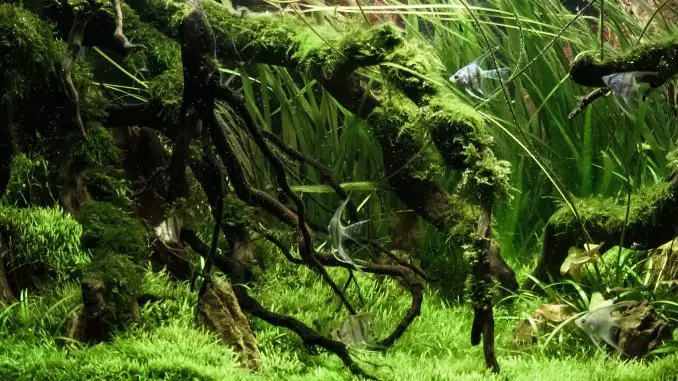
Most freshwater fish live in habitats packed with aquatic plants. They provide shelter, breeding grounds, and even a supplementary food source.
When setting up the tank for your fish, you want it to be as close to nature as possible. This can be achieved by adding some plant life to your aquarium.
All plants need some exposure to light in order to grow, but you don’t need an expensive high-tech lighting system to create an attractive aquascape. Many aquarium plants will do just fine in low light.
We have rounded up over 30 different species that you can keep in low-light aquariums. Keep reading to discover more.
Low Light Aquarium Plants
Best For Beginners
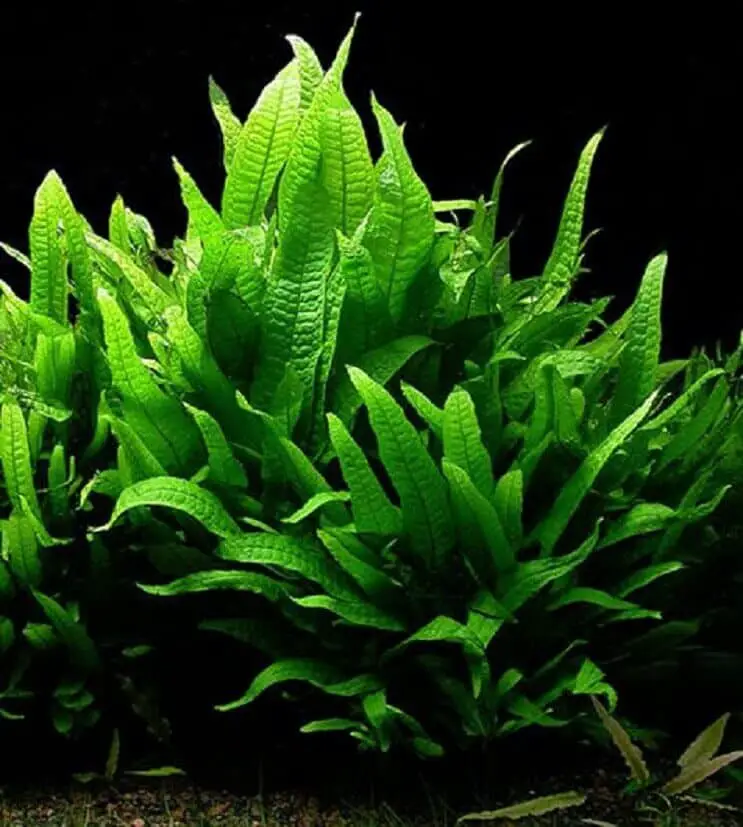
For those that are new to the art of aquascaping, these plants are a good place to start. They are also very easy to care for and do not need lots of additional maintenance or equipment.
Most of these are hardy and will be resilient in the face of many common beginner mistakes.
Java Fern
The Java Fern is a classic tropical aquarium plant that is perfect for low-light aquariums.
They have wide, broad leaves and can grow in dense clusters to provide lots of shelter and shade.
Placing them along the edges of your tank looks great. They can be introduced to your tank by anchoring them to substrate, rocks, and logs.
These ferns are slow-growing and do not need very much pruning and maintenance. When allowed to grow, they will form clusters for your fish to hide in.
To propagate, simply pull off sections of their rhizomes and anchor them to a new surface. You can also cut away any offshoots and replant them as new growth.
Java Moss

Java Moss is a great introduction to mosses and other carpet plants. It grows in the same habitat as the Java Fern, and the two compliment one another very nicely.
It grows in dense mats and makes the perfect shelter and breeding ground for nano fish and small invertebrates. This moss can grow in a variety of light intensities and water conditions. In lower light, it will be a darker green.
They can grow in all substrate types and can be attached to just about any surface. To plant, just attach them to a surface and allow the rhizoids to settle in on their own.
Lemon Bacopa
Lemon Bacopa is a freshwater herb that grows in aquariums and garden ponds. It is named for the lemon scent given off by its leaves when crushed.
When grown outdoors, this will produce beautiful lavender-blue flowers just like wild violets. You should bury the roots of your Bacopas in fine-grained soil or sand. Gravel can scratch and damage them.
In low light, it will grow more efficiently if you add CO2 and fertilizers to the water and soil. Otherwise, growth may be a little slow.
This plant can be pruned and shaped to fit any design that you want – however, we think it looks its best as a background plant.
Others:
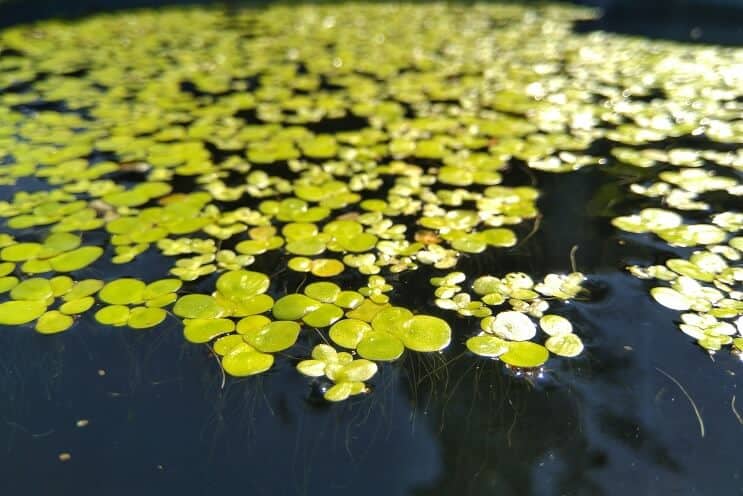
- Duckweed: This is an excellent first floating species. It can give a freshwater biotope a wonderful natural look. If your tank is exposed to natural light, you don’t need any additional lights to grow Duckweed.
- Hornwort: It is a rootless plant that is found all over the world. Usually, it is grown in high light conditions. However, its hardiness allows it to be grown in low light as well.
- Brazilian Pennywort: This South American native is named for its penny-shaped leaves. It can grow very quickly even in low light and it has a beautiful trailing appearance. This is a great paludarium species that create the aesthetic of a natural pond or lake when grown on the surface.
Carpet Species
Plants that grow low to the substrate provide extra shelter for your bottom-dwelling fish, as well as a great place for breeding fish to lay their eggs.
Many of these species are used to being shaded out by the taller plants in the tank, so they are well adapted to low lighting conditions.
Staurogyne Repens
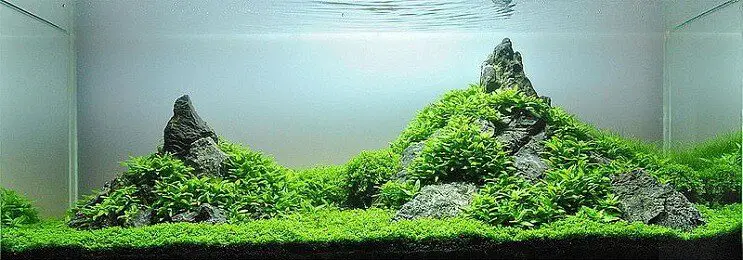
Staurogyne Repens is endemic to Brazil’s Cristalino River. The leaves have a unique starburst shape and grow in clusters.
While low light intensity is just fine, this plant will need 10 to 12 hours of exposure each day. In lower light, it will remain close to the ground and form a trailing carpet.
It must be planted in soil enriched with nutrients in order to grow. In a low-light environment, you should provide extra CO2 and liquid fertilizer.
Staurogyne Repens will grow larger than most carpets, so to keep it in carpet formation, trim back any shoots that are growing too long.
Guppy Grass
Najas grass, or guppy grass, is an excellent grass for breeding tanks and fry nurseries.
It can be grown as a carpet or float along the surface for a natural weedy look. It looks its best when planted in the foreground of your tank.
As its name implies, it is great for guppies and other nano fish.
In low light, this species will remain very close to your substrate. If you find it is getting too tall, you can prune it back to keep it low.
Christmas Moss
This festive-looking Brazilian moss is one of the most popular carpet mosses around. It’s known for its deep green Christmas tree color.
It grows in shaded areas in the wild, so it is quite used to low light. This moss must be tied down to the substrate if you want to create a carpet. Use cotton threads to attach the moss to your substrate, rocks, and driftwood. It can grow over just about any surface.
Christmas moss is very tall and needs to be trimmed regularly, cleaning is necessary to keep algae from spoiling it.
Peacock Moss
Named after the colorful bird, Peacock Moss has a feathery appearance and a very unique iridescent blue color.
Low light is an absolute must for this moss – it needs at least 50 percent shade in order to grow.
This is another great paludarium choice. It can grow on land or in water and makes a great addition to any ferns. It should be planted in fertile soil enriched with decayed sphagnum moss. Its showy appearance will enhance the dark/shaded areas of your tank.
Peacock Moss can grow quite long and should be trimmed back if you want to keep it looking like a carpet.
Others:
- Awl-Leaf Arrowhead: Arrowheads are very common freshwater reeds, the Awl-Leaf Arrowhead is a type of Arrowhead that grows underwater. In low light tanks, this species will remain very low to the ground.
- Pogostemon Helferi: Also known as Downoi or Little Star, this is a low-growing plant with star-shaped leaves. They are easier to care for and maintain in low light than in high. They are known for their unusual starburst formation and jagged green leaves.
Fast Growing
Most plants need a lot of light in order to grow quickly. These plants below however can grow rapidly even in low light.
These will quickly transform your tank into a lush underwater jungle. However, they should be handled with care.
Bladderworts
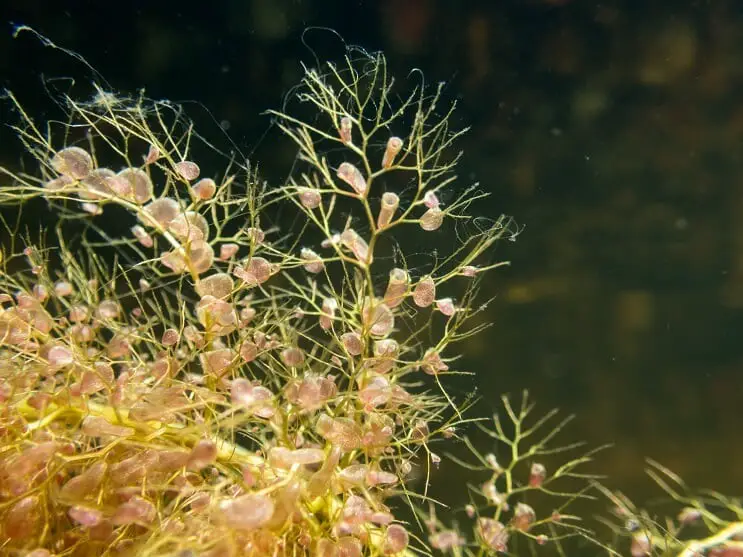
Bladderworts are carnivorous floating plants found in lakes, ponds, and streams all over the world.
They trap insects in their small bladders (which have trigger hairs). When an insect brushes against the hairs, the bladder opens up and traps the bug.
These are hardy species that grow in various lights and depths, but they require very frequent maintenance to ensure they don’t get out of control.
Bladderworts don’t have roots – to plant them, simply float them on the surface of your tank. Even in low light, they will very quickly establish themselves once placed.
Giant Hygro
The Giant Hygro, also known as the Temple Plant, can grow under or above water. It will quickly grow over the surface of the tank if left to its own devices.
A few of these, kept in the background of your tank will create a beautiful underwater jungle. Their wide, broad leaves will provide lots of cover and shade.
They will grow their best in the substrate that is very iron-rich.
This species must be pruned frequently to keep them from shading out your tank.
Hydrilla
Hydrilla, also known as Water Thyme, is one of the hardiest weeds you can keep. It tolerates just about every possible light intensity and water condition (it even grows in Antarctica).
In the aquarium, it’s a great low-tech alternative to Anacharis. It can be planted by its roots in fine-grain mud and sand. It should not be placed in tanks with other tall, weedy species that it can intertwine with.
These hardy aquarium plants are very good at taking in CO2 and nutrients from the water around them.
Once Hydrilla takes hold, it will get absolutely everywhere – it can grow an inch every single day!
Others:
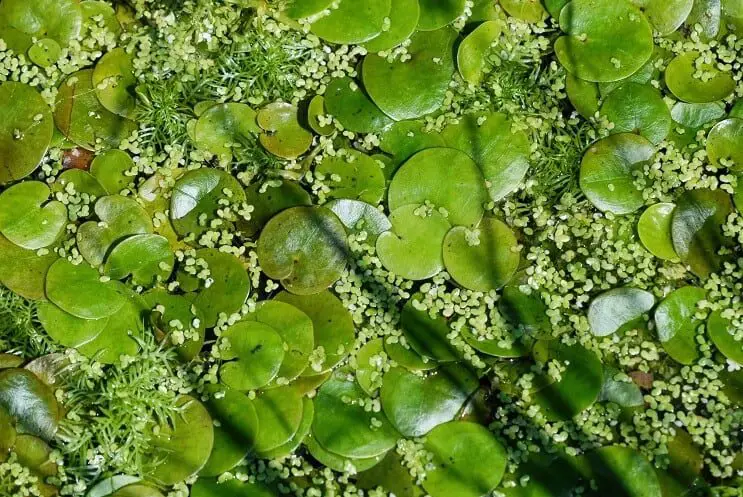
- American Waterweed: This is very similar to Hydrilla. It also makes a good alternative to the more light-demanding Anacharis.
- Frogbit: This is a floating plant native to Brazil’s Amazon River. Its leave resembles miniature lily pads. It’s a great lower light alternative to the Water Hyacinth and can provide a fresh and natural look to a tank or pond.
- Moneywort: Moneywort, also known as Creeping Jenny, is well known for its quick growth. It can grow both on land and in water, making it great for your paludarium.
Best Low Light
In aquascaping, these plants are considered the best of the best for low-tech tanks. Many of these choices are affordable and easy to care for, making them great for beginners as well as experienced aquascapers.
Cryptocoryne
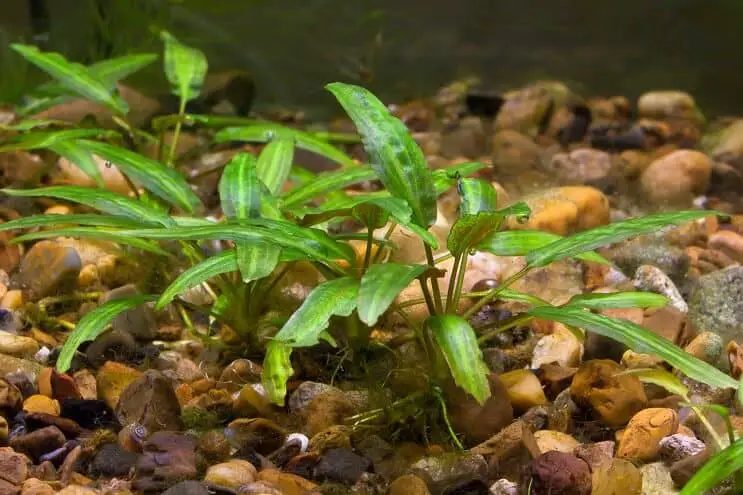
Crypts were made for low-tech tanks – they are one of the few plants that will grow their largest in low light.
There are several species available, each with its own unique appearance but very similar care requirements. Cryptocoryne wendtii is the most popular choice.
They have large and showy leaves in vivid green colors.
In small nano tanks, they may look better as a background feature.
Anubias
Anubias is great for just about any tank – they will make your tank resemble the African jungles where they grow.
The most popular species are Anubias nana and Anubias barteri. Both have similar care requirements and are tolerant of low light. You can anchor them to your rocks, logs, driftwood, and other decorations you include in your tank. They make especially good paludarium species because they can grow on almost any surface.
These are some of the most undemanding plants you can find. They are cherished by beginners and experts alike for their easy, affordable care.
Dwarf Rotala
The Dwarf Rotala, or Roundleaf Toothcup, is considered mandatory in the aquarium sphere. It can be found in a variety of different aquascapes.
It grows as an underwater shrub or bush and is the best species of Rotala for low-tech tanks.
In tanks with more lighting, it is usually bright green. In a low-light environment, the leaves will appear to be more yellow.
This species can be shaped and pruned as desired to fit your biotope’s design.
Others:
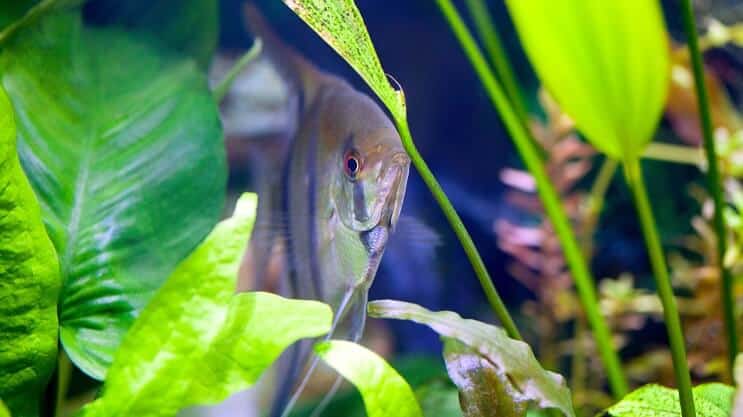
- Vallisneria: Also known as Tapegrass, this freshwater grass is quite similar to marine seagrasses. They are ideal for tanks with moderate to high flow to simulate the natural rivers and streams that they call home.
- Amazon Sword: This plant is among the most iconic of tropical freshwater plants. It thrives in any light intensity, but it will grow a bit slower in low light.
- Parrot Feather: It’s easy to see how the Parrot Feather got its name. These South American natives have beautiful blue-green feathery leaves.
Easy Maintenance
Even aquarium plants that require very little tech can often have demanding care requirements.
Some are more difficult to plant and propagate than others and require lots of maintenance in order to truly stand out. These species do not need very much care to look their very best.
Bucephalandra
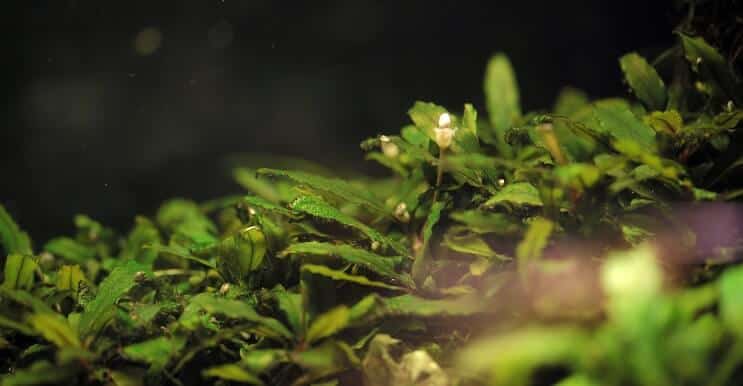
The Bucephalandra is one of the rarer, more exotic low light plants that you can keep. It’s relatively new to the aquarium trade.
They have slow-growing shiny deep green leaves and will grow attached to rocks and logs. In low light, their leaves are a very deep green.
Although they are easy to care for but can be quite expensive and difficult to find.
Dwarf Hygro
The Dwarf Hygro is a smaller and more easily maintained version of the Giant Hygro. Its appearance, affordability, and easy care all make it a very popular choice for aquariums.
It is known for its ability to tolerate most water conditions and light intensities.
Your bottom dwellers and nano fish will appreciate its short stature and shady leaves. It looks best in the foreground or the center of the tank.
These can be planted in any substrate, but fine gravel or soil works best. They are planted by their stems and will only need occasional pruning to keep their shape.
African Water Fern
The African Water Fern, also known as the Congo Fern, hails from the freshwater wetlands of Zimbabwe. It is very similar to the Java Fern in terms of care and maintenance.
It can grow attached to the rocks and other decorations in your tank. It is a little bit more sensitive to light and temperature than the Java Fern.
This plant is very slow-growing and will not require any additional care or pruning. As long as the water quality is optimal, they will do just fine left on their own.
Pygmy Chain Sword
The Pygmy Chain Sword is a low-growing sword plant that resembles a miniature Amazon Sword.
This is one of the few species that does not change its colors in low light. It grows in the same vivid green color no matter what. The light can be low, but must be turned on for at least 10 to 12 hours a day.
These grow close to the bottom and can be used for carpeting. They look best in the foreground as a compliment to Amazon Swords.
In low-light habitats, they need CO2 and fertilizer to grow. The soil that you place them in should be very rich.
Others:
- Pellia: These are great for invertebrate tanks and will provide a supplementary food source for your tiniest herbivores. It will often grow in the shade of other taller species.
- Marsh Seedbox: The Marsh Seedbox is a member of the Ludwigia family of water primroses. It is the best Ludwigia for low-light tanks. It needs a lot of nutrients in its soil in order to grow but does not require too much care outside of that.
Most Affordable
Maintaining your low-light plants can be quite a chore. Some require expensive fertilizers and equipment in order to grow their best in a low-light environment.
These plants below are perfect for aquascaping on a budget. You won’t have to break the bank in order to care for these.
Marimo Balls
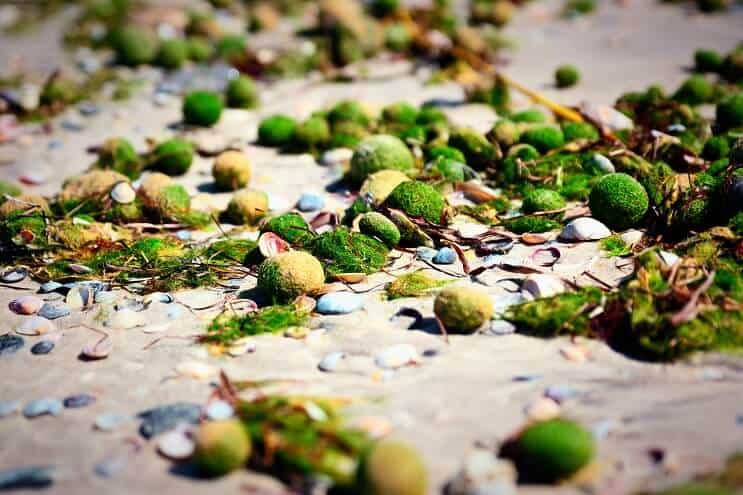
Marimo Moss is one of the easiest and most unusual plants that you can keep in any tank. This is not really a plant at all – it’s a form of green algae that grows in a unique ball formation.
They look like fuzzy green rocks. When scattered around, they give your tank a very fun and interesting look. Your algae grazers will enjoy a nibble on these from time to time, and invertebrates just love to settle on them.
These are sold as clumped moss balls that can be placed right in your tank. They prefer shaded areas with little exposure to light.
Liverworts
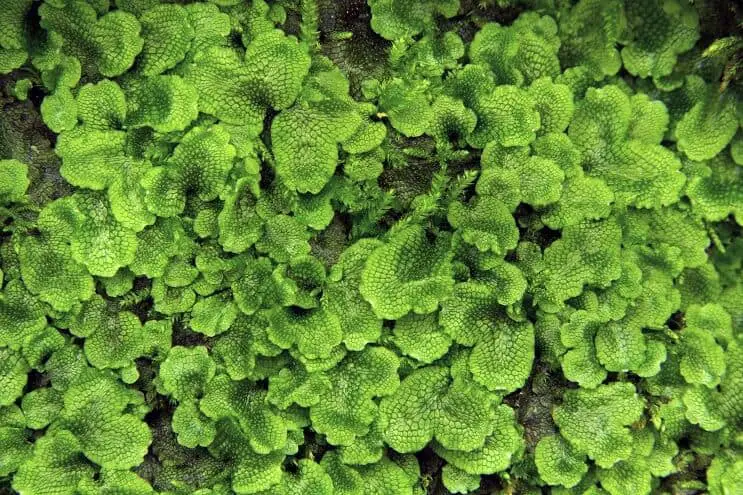
Liverworts are rootless aquarium plants with leaves shaped like tiny livers. There are both terrestrial and aquatic species of Liverworts. They grow in wetlands all over the world.
These are extremely hardy and will grow in all kinds of conditions. Low light helps them stay moist and keeps them from drying out.
Their rhizoids will anchor to your substrate naturally when planted. They can grow over all kinds of surfaces, but do not need to be tied down.
Not much additional care is needed once you plant them, and in swampy conditions, they will raise themselves.
Others:
- Floating Water Moss: In spite of the name, a Floating Water Moss is not moss at all. It is actually a floating fern. Natural sunlight is the only light that they will need. They won’t need a fancy lighting system or any additional tech.
- Micro Sword: The Micro Sword is another low-light growing sword plant from South America. It will grow into a thick underwater lawn that your bottom dwellers will love.
Summary
All plants need light to grow and thrive. But if a high-tech, high-light tank is not your style, there are plenty of options out there for you.
Even in a low-light aquarium, you can transform your tank into a beautiful lush green haven for your fish.
Low light plants are hardy, resilient, and can form a very attractive underwater garden.
Whether you are a seasoned hobbyist or just starting out, there is something for you in the art of aquascaping!
What sort of plants would you like to keep in your aquarium? Let us know in the comments section below…

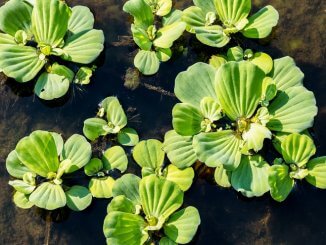
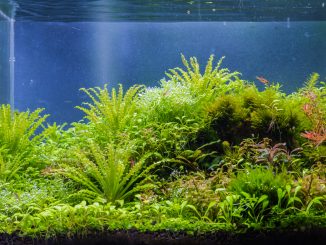
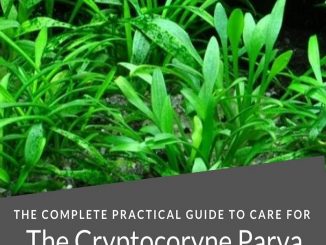
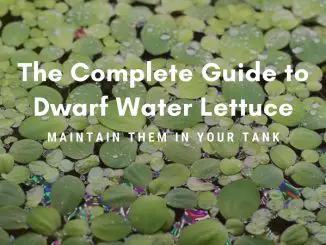
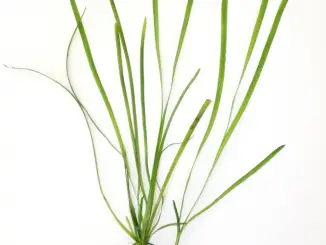
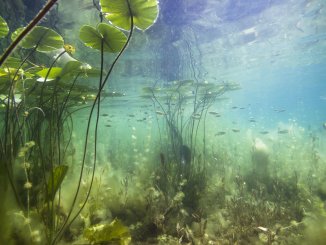
I love this! I am New to the hobby and I love the articles! Lots of great ideas and advice.
Thank you.
I am Not New to the hobby but I was out of the hobby for 40 yr’s well I’m back with 6 tanks this go-round 2-10’s for male betta and sorority of females (Panda & Peppered Cory) 1-60 for some of my corys (bronze & green) all tanks have Cory-cats 1-55 with my foot long Pleco and my 2 albino Dojo-Loach also over 12 inch’s,2 Yo-yo loachs at 6 inchs are getting a new home. Just picked up a used 125 gallon.I love the articles.Many great ideas and advice, thanks Robert from Canada.